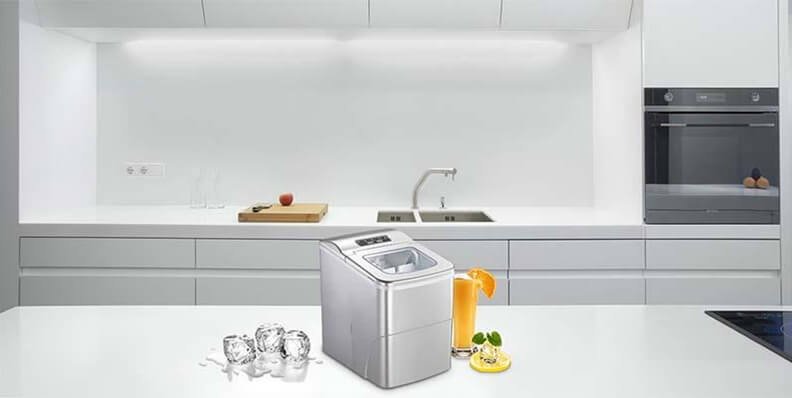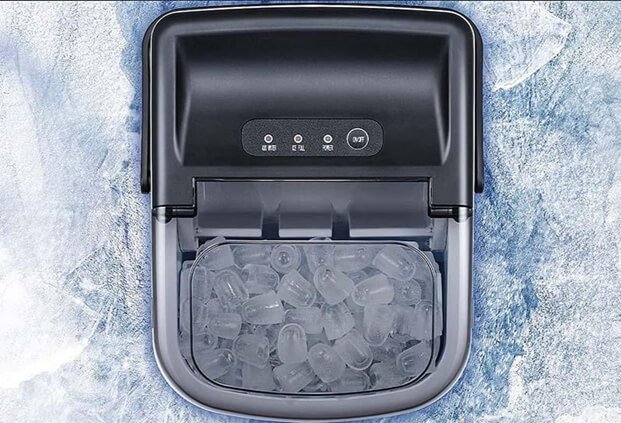We all take for granted that we can open our freezers and take out ice cubes for a refreshingly cold drink. Today you can even buy countertop ice makers to enjoy the exact size and shape of ice you love. But have you ever wondered how an ice maker works? First, let’s look at how to make ice and then how to select the best option for your home.
Table of Contents
Ice-Making 101: The Basics
Before automatic ice makers existed, you poured water into a mold (ice tray). Then let it freeze before emptying your cubes into a glass or storage container.
How Does an Ice Maker Work?
Start making ice by connecting the electricity and water supplies to the machine. Then the magic happens.
- An electrical signal opens the water valve to send water to the mold.
- Next, the freezer does its job of freezing the water into ice.
- Once the ice reaches about 9 degrees Fahrenheit (-13 degrees Celcius), the freezing process stops.
- Then a heating coil releases the ice from its mold so that an ejector can push it into the collection tray.
- You press the button on the front of the machine to fill a glass with ice. Now it opens a lever, drops the ice through a shaft, and into your glass.
Types of Ice Makers
Although you may not realize it, ice makers have come a long way in recent years. And many types exist. Kismile offers the best countertop ice makers on the market.
Standard Ice Makers
Most families rely on the standard ice maker in their freezers. These systems work well to produce enough ice for most families. And they’re the most common type of ice maker.
Countertop Ice Makers
However, Kismile countertop ice makers take over when you want specialized ice shapes. These units produce ice in the same manner as I described above.
But after releasing ice to the storage tray, no freezing mechanism exists. So you either use the ice immediately or transfer it to a container in your freezer.
You’ll see another difference in how water enters the countertop device. Some connect to your existing water line for automatic filing. However, most countertop ice makers have a water reservoir. So you pour in purified water for the best-tasting ice available.
Both standard and countertop ice makers produce around 25-30 pounds per day. But the most significant difference lies in the ice shapes they each create.

Shapes of Ice: Which is Best?
Squared cubes of ice come from most regular freezer ice makers. They are the most common ice shapes. But many other choices await you!
Nuggets
One of my favorite ice shapes for a cold glass of lemonade in the summer are nuggets. You might hear these chunks called Sonic ice after the drive-in restaurant. It reminds me of their real fruit slush drinks. Fortunately, nugget ice rarely sticks together, and it melts slowly.
Flakes
Ice flakes come from an ice maker with a built-in grinder that shreds the ice. It’s perfect for a snowcone on a hot summer day.
Bullets
A smooth round ice cube makes perfect cocktails. Impress your friends with Kismiles’s easy-to-operate countertop ice makers producing restaurant-style bullet ice.
Half-Cubes
These ice cubes are similar to what standard freezers produce. However, they are smaller in size and often referred to as half-cubes. These smaller ice cubes last longer in your drinks, perfect for pouring over a cocktail.
What shape of ice works best? We have so many choices today when only a hundred years ago, people bought ice from a traveling sales wagon.
Can you imagine waiting for the horse-drawn wagon to deliver a massive block of ice to your door? It’s hard to believe that ice makers now fit right on your countertop. With all the choices available, which shape of ice will you choose?











